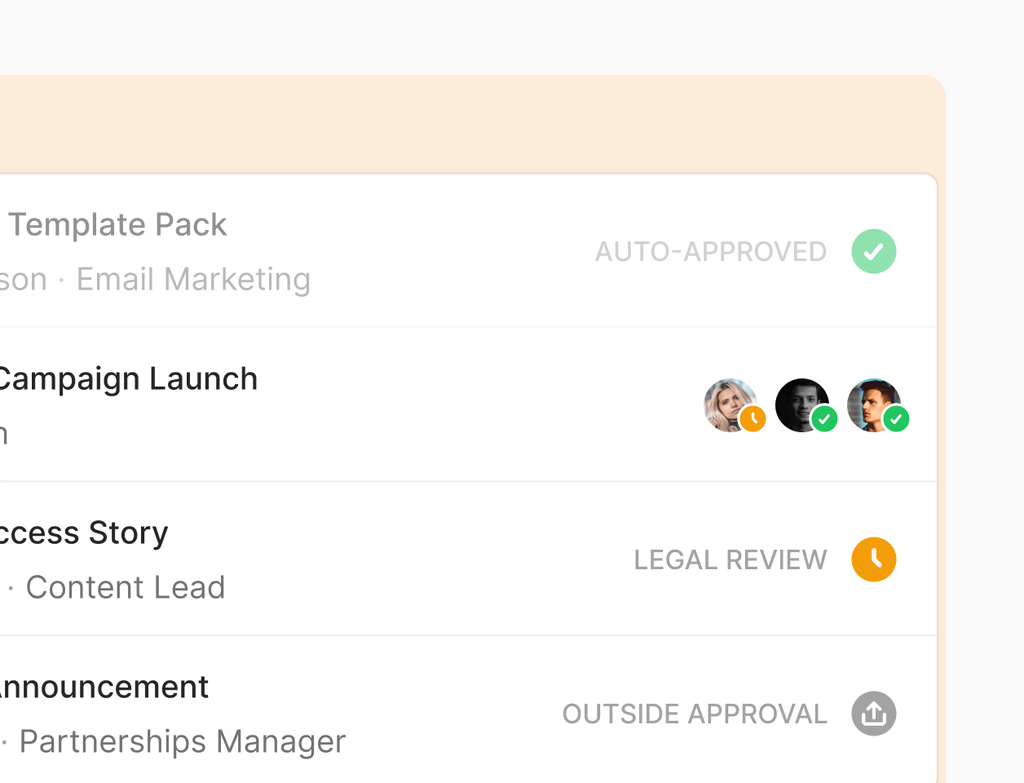What is Multi-Account Management and who benefits from it?
Multi-Account Management is a Hoop feature designed for organizations running multiple distinct brands or business units. It provides a central system to govern these separate accounts while allowing local teams the necessary autonomy to operate effectively. Central marketing, operations, and compliance teams benefit greatly from this feature.
This capability is crucial for global enterprises or companies with a portfolio of brands. It ensures standardized operations, consistent governance, and shared insights across the entire organizational structure. By grouping accounts, you maintain clear ownership and enable central teams to manage standards while local teams focus on execution with speed and compliance.
How does this feature enable centralized control and local flexibility?
The feature standardizes key elements across all accounts, ensuring that every brand adheres to global guardrails without sacrificing speed. You can implement consistent policies for content, data, and permissions that apply universally.
Local teams retain flexibility by executing campaigns and customer interactions autonomously within their specific account, leveraging shared resources like templates and data models. The Hoop platform enforces smart boundaries, limiting access between brands to protect privacy and maintaining centralized control over critical integrations and governance policies.
- Reuse templates, assets, and data models across accounts.
- Centralize key integrations and governance.
- Limit access between brands to protect privacy.
How can we maintain consistent metrics across all managed accounts?
Maintaining consistent metrics is achieved through the use of standardized properties and common definitions established centrally. The Multi-Account Management feature allows you to roll up pipeline, spend, and performance data into executive dashboards that provide cross-account visibility.
This roll-up functionality ensures that comparisons are "apples-to-apples," giving leadership a unified and accurate view of the entire organization's performance. By defining common metrics within the Hoop platform, data integrity is maintained, supporting informed strategic decisions based on reliable, standardized reporting.
To ensure consistency, central teams must define and enforce:
- Standardized data models and properties.
- Common definitions for key performance indicators (KPIs).
- Uniform reporting templates and dashboard layouts.
What are the key governance features that travel across accounts?
The governance framework within Hoop's Multi-Account Management is comprehensive, ensuring that compliance and quality standards are applied globally. This includes applying uniform policies, managing permissions, and conducting audits across all instances.
Central teams can apply consistent naming, tagging, and data retention rules across the entire group of accounts. Furthermore, the platform allows you to grant specific roles and permissions that function consistently, regardless of the individual account. Audits are centralized, enabling you to trace changes to assets and settings from a single pane of glass, ensuring operational security and compliance.
Which pricing plans include access to Multi-Account Management?
Access to the powerful Multi-Account Management feature is available to customers on the Hoop core, pro, and enterprise pricing plans. The level of functionality and the number of accounts supported may scale with the plan selected, ensuring that businesses of all sizes can leverage centralized control and governance.
For organizations with complex regulatory needs or a very large number of distinct business units, the enterprise plan offers the most robust features, including advanced auditing and customized permission models. We recommend consulting with your Hoop representative to determine which plan best aligns with your organizational structure and scale requirements for managing multiple brands.
Can brands share data and assets, and how is privacy protected?
Yes, brands can share assets and data models within the Multi-Account Management structure to promote efficiency and resource reuse. For instance, global marketing teams can create templates for customer journeys or content that all local brands can instantly adopt.
However, the platform is designed with smart boundaries to protect privacy and respect legal requirements. Data sharing is selective; you explicitly manage which types of data and assets are accessible between different accounts. The system centralizes governance to ensure that privacy constraints and contractual boundaries are respected, preventing unauthorized cross-brand data leakage.



.avif)





